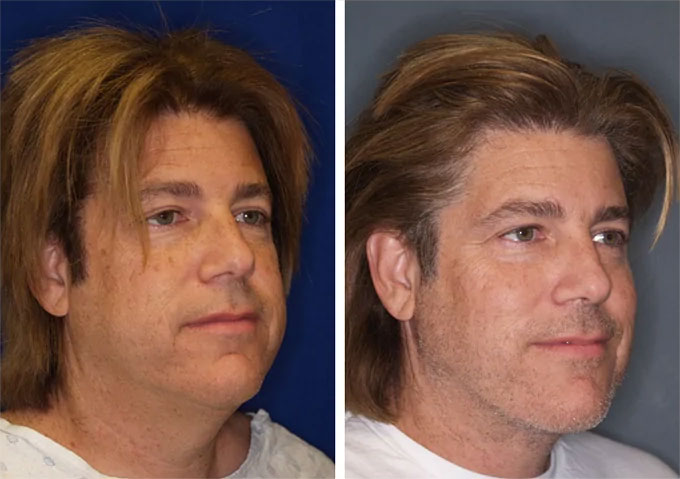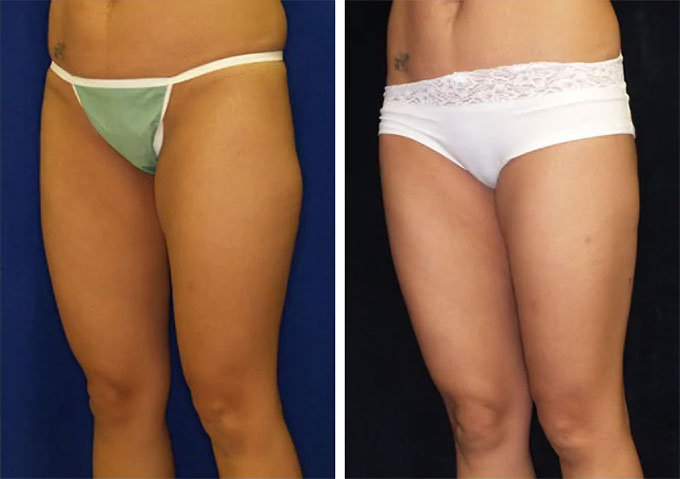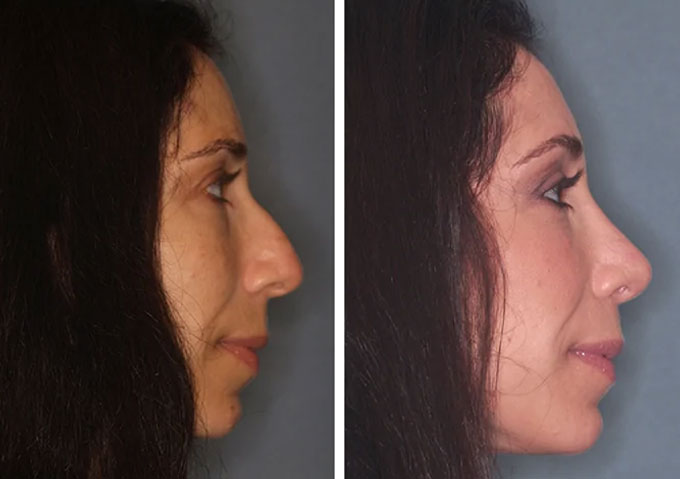Facial Fillers in Beverly Hills
Facial fillers are injectable products that are designed to either smooth wrinkles or improve facial contours. Depending on the particular product, it can be injected at various levels, from the mid-dermis (within the skin) to just above facial bones. Their ability to smooth skin or improve facial contours and the longevity of their results depends on each product and its formulation.
FDA-Approved Face Fillers: Types & Benefits
There are a number of products that are FDA-approved fillers for the face. This list includes:
- Hyaluronic acid gels
- Hydroxyapatite crystals
- Lactic acid crystals
- Methylmethacrylate beads
Hyaluronic acid is a naturally occurring substance found in our own skin and tissues. In its natural state, it is made of very long chains of sugar molecules that attract water molecules and provide support to the cells in the body. In the purification and processing of this material, these long chains are chemically bonded, called cross-linking. This gives it even more stable physical characteristics and slows the resorption of the product once it’s been injected into the skin and subcutaneous tissue. Products that are more cross-linked are thicker and more viscous gels with stiffer physical characteristics and are therefore better at filling large facial contours by virtue of their structural support. They are more durable and less apt to be broken down or resorbed. Less cross-linked products are less viscous and can permeate the more shallow part of the dermis, making it better suited for shallow injections to treat fine lines.
Radiesse: Deep Filler with Long-Lasting Results
Hydroxyapatite crystals are the basis of the product known as Radiesse. This is another deep filler designed to volumize the face. Because of its composition, it needs to be injected into deeper tissues, frequently near the bone. Radiesse is very effective in restoring cheek contours. Unlike the hyaluronic acid products, Radiesse can stimulate collagen production, improving outcome over time. Like Juvederm Voluma, Radiesse can possibly last up to two years.
Top Fillers for Fine Lines and Contours
Restylane Fine Lines and Juvederm Ultra are the most popular products available in the United States for treatment of fine lines that occur around the mouth, chin, jaw line, between the eyes, and forehead. They are approximately equivalent in concentration of hyaluronic acid and percentage of cross-linked HA, and they perform and last in a similar fashion. They can be easily molded after injection and are the best product for the tear trough grooves between the lower lid and the nose.
Thicker Fillers for Deep Contours & Volume
Restylane, Perlane, and Juvederm Ultra Plus are more cross-linked products with higher concentrations of HA. They are thicker gels requiring care in placement in the deeper skin or below the skin, because they do not easily become integrated around the collagen of the dermis, and merely push it away, forming a bluish spot. These products are approximately equivalent in concentration, with Juvederm Ultra Plus having the highest percentage of cross-linked products. These products are designed to create changes to facial contours like laugh lines or nasolabial folds, marionette lines or oral-mandibular grooves, and for volumizing the cheek regions. They are also the product of choice for lip augmentation. Juvederm Voluma is a new formulation that has the greatest plumping effect on the face due to its unique structure and cross-linking. It also has the greatest duration of effect, possibly about two years.
Sculptra: Collagen-Stimulating Filler for Rejuvenation
Lactic acid crystals are the basis of the product known as Sculptra. It was originally used for reconstruction in those afflicted with facial fat wasting syndrome, it is now approved for cosmetic rejuvenation of the aging face. Sculptra gets it’s entire volumizing effect from collagen stimulation, so maximum results may take up to 10 weeks to obtain.
Long-Lasting Artifil Implant for Skin Rejuvenation
Artifil is a product that uses microscopic methylmethacrylate (plastic) beads that are carried in a slurry of collagen. Because the beads are lasting, Artifil is technically an implant, and has lasting effects possibly up to a decade.
Dr. Minniti will discuss your options with you and guide you to the right product.
Related Procedures
Botox/Xeomin
Botox/Xeomin is for cosmetic uses like smoothing skin wrinkles by relaxing targeted muscles.
Facelift
A facelift is a time-honed cosmetic procedure that can turn back the clock and make you look 10 years younger.
Brow Lift
Brow lift improves the appearance of the forehead by smoothing wrinkles and reducing the fullness in the upper eyelid.
Before & Afters
Patient Gallery



